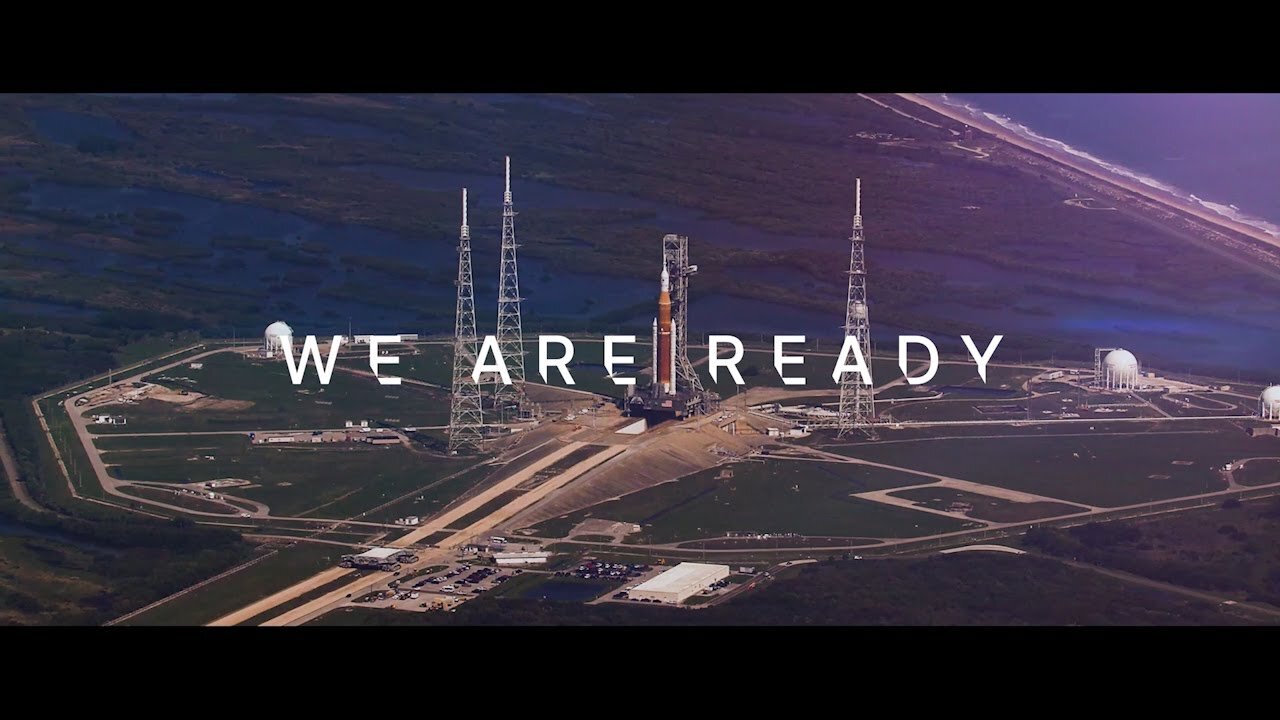Premium Only Content

Artemis I We Are Ready
NASA's Artemis program is a series of missions aimed at returning humans to the Moon and establishing a sustainable presence there. The program is named after the Greek goddess Artemis, who is the twin sister of Apollo, the namesake of the original Apollo program that landed humans on the Moon in the 1960s and 1970s.
The main goals of the Artemis program include:
1. **Landing Humans on the Moon:** NASA plans to land "the first woman and the next man" on the lunar surface. This will be achieved through a series of crewed missions, starting with Artemis III.
2. **Sustainable Lunar Presence:** Unlike the Apollo program, which consisted of short lunar missions, Artemis aims to establish a sustainable presence on the Moon. This includes the construction of lunar habitats and the use of lunar resources.
3. **International Collaboration:** NASA is working with international partners, including the European Space Agency (ESA), the Japan Aerospace Exploration Agency (JAXA), and the Canadian Space Agency (CSA), to achieve these goals.
4. **Space Launch System (SLS):** NASA's new heavy-lift rocket, the Space Launch System, is being developed to carry astronauts to the Moon and beyond.
5. **Orion Spacecraft:** The Orion spacecraft is the crew vehicle that will transport astronauts to lunar orbit and back to Earth.
6. **Gateway:** The Lunar Gateway is a space station that will orbit the Moon and serve as a staging point for lunar missions. It will also be a platform for scientific research.
7. **Sustainable Exploration:** Artemis is focused on conducting science and exploration activities that will help prepare for future missions to Mars and other deep-space destinations.
Artemis has faced technical, budgetary, and political challenges, but it represents an ambitious effort to return humans to the Moon and lay the groundwork for future exploration of the solar system. As of my last knowledge update in September 2021, Artemis was in its planning and development stages. Please note that there may have been developments or changes in the program since that time.
-
 1:22:50
1:22:50
Glenn Greenwald
5 hours agoRight-Wing Populists Barred from Running in Democratic World; JFK Reporter Jeff Morley on CIA Involvement and his Testimony in Congress Today | SYSTEM UPDATE #432
73.2K28 -
 58:27
58:27
BonginoReport
4 hours agoMusk’s 13th Alleged Baby Mama’s Anti-Privacy Tour - Nightly Scroll w/Hayley Caronia (Ep.17)
105K39 -
 2:11:32
2:11:32
Michael Franzese
3 hours agoLindy Li: DNC Insider Reveals Dark Truth About Biden, Kamala and Pelosi
28.1K23 -
 1:17:20
1:17:20
Kim Iversen
5 hours agoFrom Tesla-Smashing to Jasmine Crockett-Stanning: Woke Unhinged Edition
100K54 -
 LIVE
LIVE
TheSchleppy
23 hours ago $0.24 earned✨TheSchleppy✨RYSE BEATIN 6HOURS-WUKONG TIME! A 24HOUR STREAM?
50 watching -
 LIVE
LIVE
ManoloCalifas
58 minutes ago🔴 LIVE - LAST STREAM BEFORE VERDANSK IS OUT | GRINDING TO 100 FOLLOWS
23 watching -
 1:34:17
1:34:17
Redacted News
5 hours agoNetanyahu Boasts Control Over Trump: Is Criticizing Israel About to Become Illegal?
107K261 -
 1:15:09
1:15:09
vivafrei
9 hours agoVirginia Giuffrie "Accident"? FBI Dragging Its Feet? Tesla Vandal Arrested & SUED! & MORE!
112K73 -
 56:01
56:01
Candace Show Podcast
5 hours agoBREAKING NEWS: I Got Served For ANOTHER Lawsuit | Candace Ep 169
97K146 -
 44:47
44:47
The Football Terrace
7 hours ago $0.63 earnedLewis-Skelly ABUSE is DISGUSTING!😨 Goldbridge CALLS OUT Ferdinand & Man City 115 VERDICT🚨
27.8K